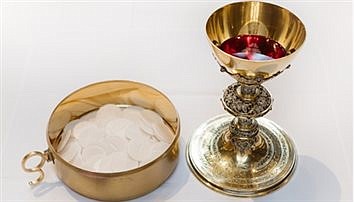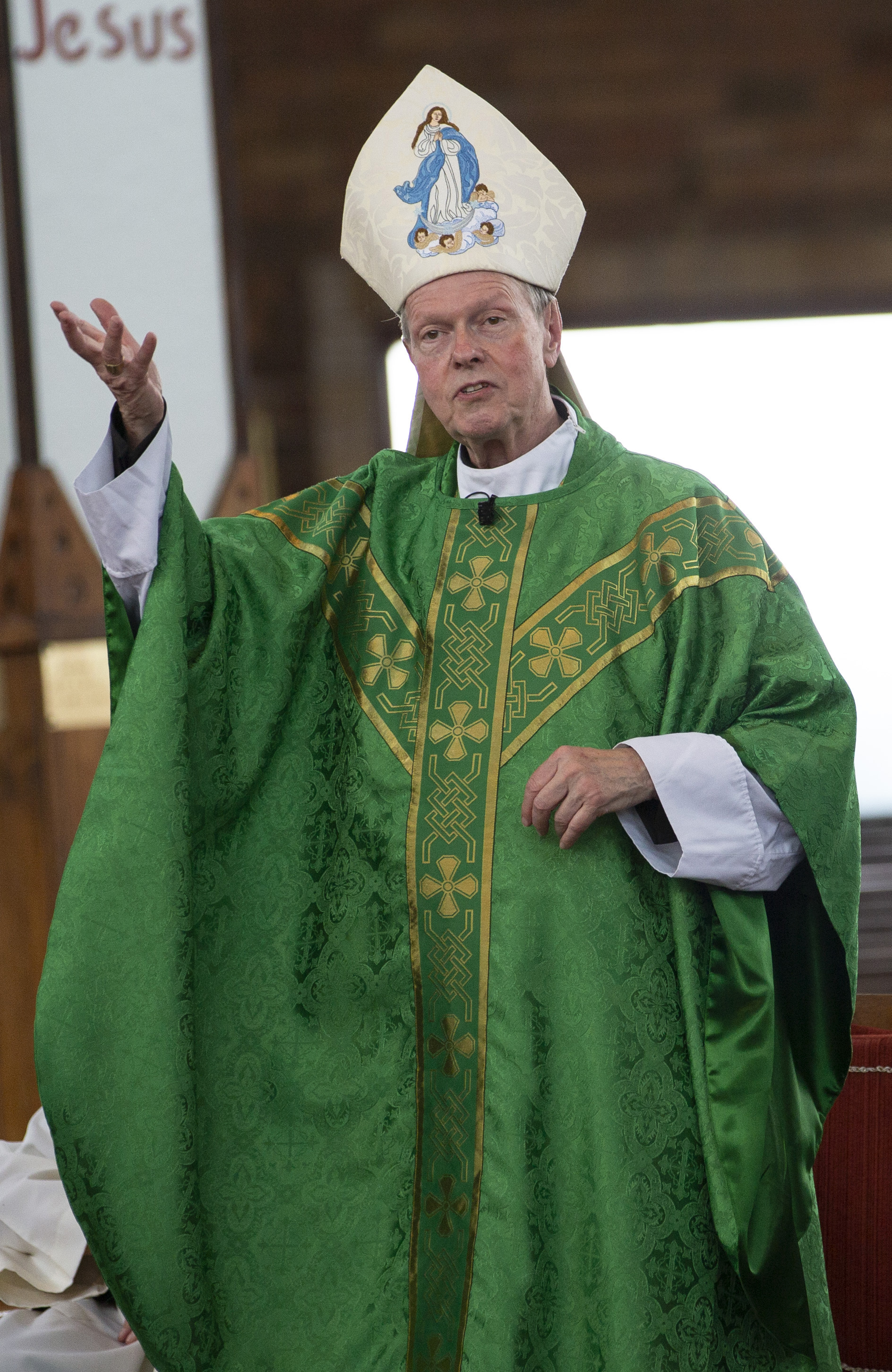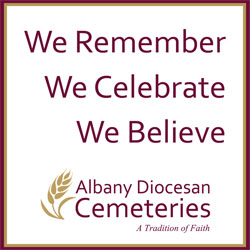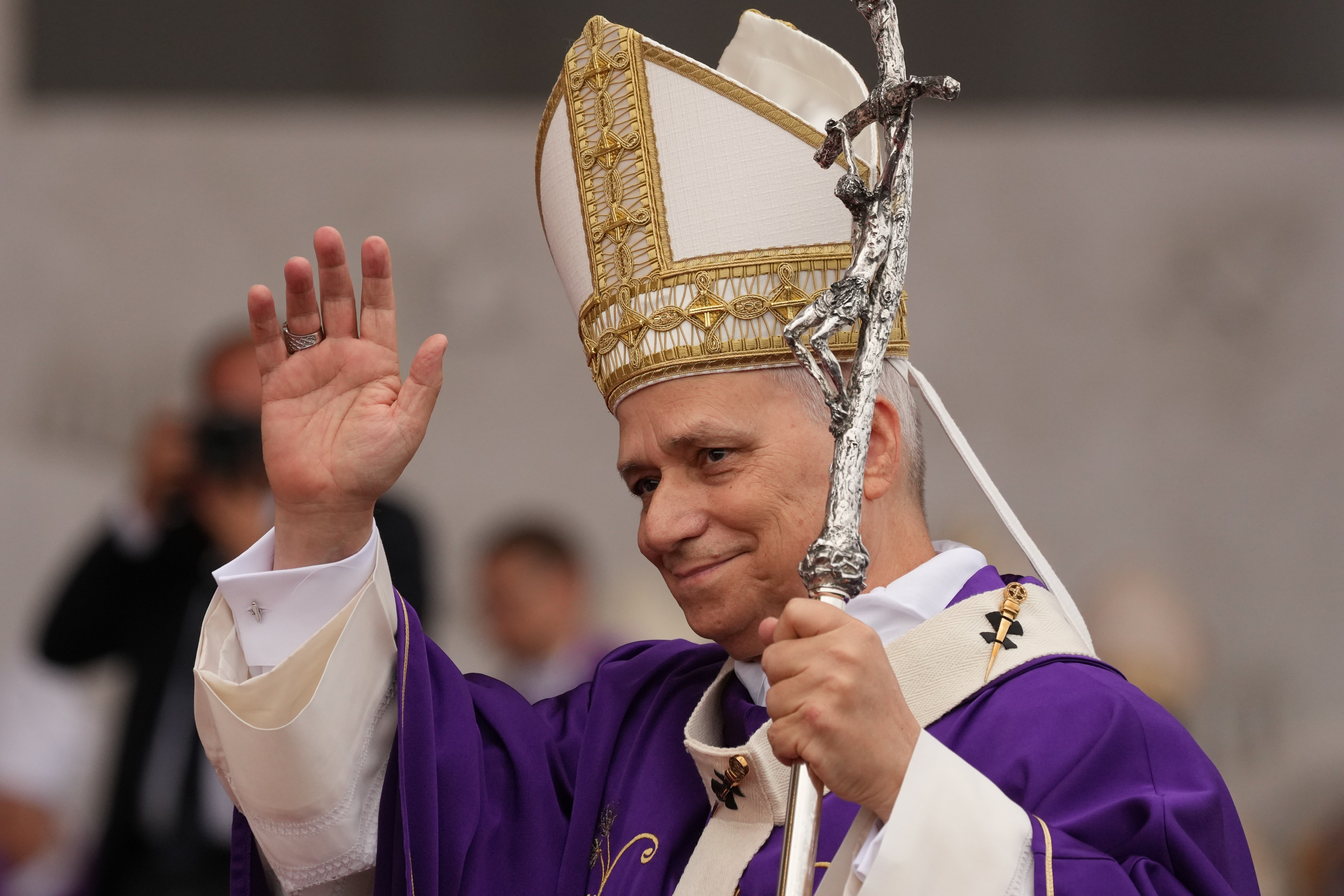October 23, 2019 at 9:12 p.m.
Seminarian's diary
Real Presence is a fundamental truth of our faith
My mind sometimes wanders during Mass.
Whenever I catch myself daydreaming, I focus my attention back to where it belongs: to full, conscious and active participation in the liturgy. At a recent Mass, however, I permitted myself to indulge in a mental diversion.
Here at Pope St. John XXIII National Seminary, prior to the Eucharistic prayer, the concelebrating priests exit their pews to join the main celebrant up in the sanctuary, gathering in a semi-circle around the altar. At Mass on Sept. 9, the feast of St. Peter Claver, the presiding priest was a visitor from Rome, Monsignor Francis Kelly, a Canon of St. Peter’s Basilica. This is my third year at Pope St. John, and I cannot recall seeing as many priests arrayed in the chapel’s sanctuary as there were that day. I counted them; there were a dozen presbyters, plus the esteemed monsignor. At once a picture popped into my mind, that of Leonardo da Vinci’s famous Last Supper, which depicts Christ sharing the first Eucharistic meal with the 12 Apostles.
The connection between the sacrifice of Mass unfolding in front of me — with Msgr. Kelly standing in persona Christi Capitis (that is, in the person of Christ the head) — and the image of Jesus at table in the Renaissance master’s fresco, were indisputable. At the Last Supper, Christ, the high priest, consecrates ordinary bread and wine for the first time, transforming them into his body and blood. The monsignor, surrounded by a dozen of Jesus’s disciples, broke the bread and said the blessing, repeating the very words of our Lord on Holy Thursday: “This is my body, which will be given up for you; do this in memory of me” (Luke 7:19).
Christ was not merely eating a final meal with his faithful followers, he was commanding them to “do this;” that is, to perpetually commemorate and share his self-gift of the Eucharist through his Church. Transubstantiation is the term theologians later gave to the permanent changing of the substance of bread and wine into the body and blood of Christ by the power of the Holy Spirit. Jesus is actually present with us, and, upon partaking of this bread from heaven, in us during each and every Mass. The Real Presence of our Lord in the Eucharist makes it the most blessed of our seven sacraments. Transubstantiation is a fundamental truth of our faith.
That is why the results of a recent Pew Research Center survey are all the more shocking. According to the data, 69 percent of U.S. Catholics polled do not believe that Christ is actually present in the Eucharist. This is due to a combination of ignorance — 43 percent of respondents don’t know their Church’s teaching — and disbelief. Bishop Robert Barron, the most renowned evangelist in the American Catholic Church today, called this a “massive failure on the part of Catholic educators and catechists, evangelists, teachers,” including himself among those who need to do more.
Bishop Barron would agree that a more robust effort at catechesis in the parishes, including adult education, is necessary. However, what is also needed is for priests and deacons to preach about the Real Presence from the pulpit in a clear way that draws from the two sources for our deposit of faith: Scripture and Tradition.
Chapter 6 of John’s Gospel is required reading for Eucharistic apologetics. Jesus emphatically declared that, “Those who eat my flesh and drink my blood have eternal life, and I will raise them up on the last day ... the one who eats this bread will live forever.” Like many of the respondents in the recent Pew survey, there were skeptics in Jesus’ time as well. Some of them said aloud, “This saying is hard; who can accept it?” The evangelist tells us there were even some who left our Lord and returned to their former ways of life. Why would a mere symbol be so hard for them to accept?
St. Paul, too, provides insights which illuminate this sacred mystery. In his First Letter to the Corinthians, the apostle quotes Christ’s words of institution at the Last Supper: “For I received from the Lord what I handed on to you, that the Lord Jesus, on the night he was handed over, took bread, and after he had given thanks, broke it and said, ‘This is my body that is for you. Do this in remembrance of me’” (1 Cor 11:23-24). Paul then issues a warning to the Christians in Corinth, cautioning them that “whoever eats the bread or drinks the cup of the Lord unworthily will have to answer for the body and blood of the Lord.” Why would Paul rebuke the Corinthians if this shared meal was just mere bread and wine?
The testimony of early witnesses to the faith verify that the Real Presence was affirmed by the Church throughout the period of Roman persecution. St. Justin Martyr, a second-century Christian convert and philosopher, provides one of the clearest descriptions of an early Mass in his First Apology. Regarding the Eucharist, a central part of Christian worship in his time as in ours, Justin wrote: “For we do not receive these things as common bread or common drink, but as Jesus Christ our Savior who became incarnate by God’s word and took flesh and blood for our salvation. So also we have been taught that the food consecrated by the word of prayer which comes from him, from which our flesh and blood are nourished by being renewed, is the flesh and blood of that incarnate Jesus.”
Church councils and popes, too, have consistently and repeatedly proclaimed this truth over the centuries. In response to the theological provocations and political unrest caused by the Protestant Reformation, the Council of Trent (1545-63) declared, “It has at all times been the belief in the Church of God” that following consecration “the true body of our Lord and His true blood exist along with His soul and divinity under the form of bread and wine.” In our own millennium, Pope St. John Paul II wrote an encyclical on the relationship between the Blessed Sacrament and the Church, Ecclesia de Eucharistia (2003). In it, the pontiff called the Eucharist “a true banquet, in which Christ offers himself as nourishment. “The pope quoted John’s Gospel, noting that “This is no metaphorical food: ‘My flesh is food indeed, and my blood is drink indeed.’ ”
Throughout the centuries the Church has experienced many changes, but the certainty that the Eucharist is truly “body, blood, soul and divinity” of our Lord Jesus Christ is a thread of continuity woven throughout the diverse tapestry of ecclesial experience. It is also the sacrament that unifies our One, Holy, Catholic, and Apostolic Church. Witness the fact that during the Patristic era, the same term, Corpus Christi, was used to refer to Christ’s earthly body, his Eucharistic body, and the body gathered together in Christian worship. To the point, if American Catholics do not come to believe in the Real Presence, we cannot stand in communion as one voice against the evils of our time such as abortion, euthanasia and racism.
I will give the last words on this matter to writer J. R. R. Tolkien, whose mind’s wanderings were incalculably more fruitful than my own. The author of the “Lord of the Rings” and “The Hobbit” was a devout Catholic and a devotee of Eucharistic Adoration: “Out of the darkness of my life, so much frustrated, I put before you the one great thing to love on earth: the Blessed Sacrament ...There you will find romance, glory, honor, fidelity, and the true way of all your loves upon the earth, and more than that.”
Dan McHale is a third-year theology student at Pope St. John Paul XXIII Seminary in Weston, Mass.
- Baton Rouge bishop suspends Mass obligation amid ICE crackdown
- 3 months after fatal shooting, Minneapolis church is restored for worship
- The importance of ‘Gaudium et Spes,’ 60 years later
- 6 years after Sheen’s cause was shelved, could Illinois-born Pope Leo bring it back?
- Franciscan Media to close at end of 2025 amid larger downturn in Catholic news media
- Cardinal McElroy of Washington says he’s ‘cancer-free’ following surgery
- New Very Marian Advent carols premieres in concert in San Francisco, Oakland
- Washington Roundup: High court to hear birthright citizenship case, OKs Texas congressional map
- Marseille’s famed ‘Good Mother’ will shine again atop city’s cathedral
- Florida Catholic bishops urge Gov. DeSantis to stay two executions








Comments:
You must login to comment.